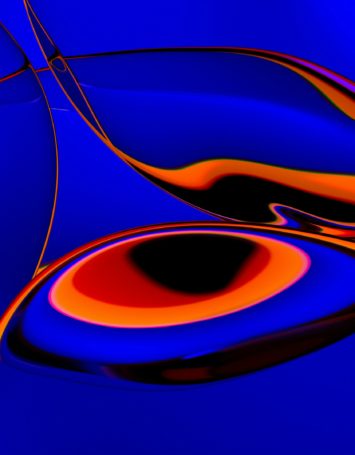Article by Clyde Shuman
The U.S. Court of Appeals for the Federal Circuit has affirmed a district court judgment that a claim directed to a ready to use liquid pharmaceutical composition of the sedative dexmedetomidine or a pharmaceutically acceptable salt thereof at a concentration of about 4 μg/mL, with less than about 2% decrease in concentration of dexmedetomidine when stored in a sealed glass container for at least five months, is invalid as obvious.
In Hospira, Inc. v. Fresenius Kabi USA, LLC, Appeals Nos. 2019-1329, 2019-1367, Hospira made and sold dexmedetomidine products under the brand name Precedex, including a ready-to-use product known as Precedex Premix. Hospira owned several patents covering its Precedex Premix product. Fresenius filed an Abbreviated New Drug Application seeking approval to enter the market with a generic ready-to-use dexmedetomidine product. Hospira sued for infringement, eventually dropping all but two claims. Fresenius stipulated to infringement of claim 6 of one of the patents, the claim on appeal, and the district court held a bench trial on validity.
At trial, the court found that Fresenius had proved by clear and convincing evidence that: (i) all stability data in the record for 4 μg/mL dexmedetomidine HCl formulations stored in Type I glass vials, sealed with coated rubber stoppers, at room temperature showed “no more than about 2%” loss in concentration at five months; and (ii) the “about 2%” limitation of the patent was inherent in a 4 μg/mL dexmedetomidine HCl formulation, so stored. The court distinguished a separate lower court decision that the about 2% limitation had not been proven to be inherent, finding that decision was based on a different record and was not binding in this case.
The district court also found that a person of ordinary skill in the art would have expected a 4 μg/mL dexmedetomidine HCl formulation to be stable in room-temperature storage conditions for at least five months.
On appeal, the Federal Circuit, as a threshold matter, agreed with Fresenius that the district court did not err in relying on data obtained after the priority date of the patent in its inherency analysis, noting that ‘[e]xtrinsic evidence can be used to demonstrate what is ‘necessarily present’ in a prior art embodiment even if the extrinsic evidence is not itself prior art.” Moreover, the work of the inventor or the patentee, himself, can be used as the evidence of inherency. Thus, per the Federal Circuit, it was not legal error for the district court to rely on non-prior art data from Hospira’s NDA and Fresenius’s ANDA as evidence of the inherent stability of the 4 μg/mL preferred embodiment.
The Court also agreed with Fresenius that the unclaimed manufacturing variables in one specification Example did not preclude a finding of inherency. As the Court noted, “[c]laim 6 is directed to a composition of 4 μg/mL dexmedetomidine disposed in a sealed glass container. [It] is not a method claim, it is not a product-by-process claim, and there are no limitations [] regarding the manufacturing process by which the recited [] dexmedetomidine composition must be prepared. Importing such limitations from [the] Example [] into the claim…would be improper.”
This left the district court’s finding that the about 2% limitation was necessarily present in the preferred embodiment. The Court found that Fresenius presented evidence in support of its inherency contention, including data from more than 20 samples of the preferred embodiment, each of which met the about 2% limitation, as well as expert testimony that concentration of dexmedetomidine does not affect stability. By contrast, Hospira did not present evidence of even a single sample of the preferred embodiment that failed to meet the about 2% limitation. Hospira also did not present evidence sufficient to persuade the district court that the manufacturing process was the reason why all tested samples met the about 2% limitation.
The Court said, “Hospira’s arguments on appeal cannot change the trial record, which included more than 20 samples that all met the about 2% limitation [as well as] testimonial and statistical evidence that dexmedetomidine is a very stable drug at any concentration… On that record, it was not clearly erroneous for the district court to find that the about 2% limitation was necessarily present in the prior art.”
The Court also rejected Hospira’s argument that the district court applied the wrong standard to the inherency question, viz., “reasonable expectation of success” rather than the correct “necessarily present” standard. The Federal Circuit reiterated that the district court engaged in an extensive analysis of the stability data in the record to reach its factual finding that the about 2% limitation was necessarily present in the prior art. Although the district court subsequently conflated the standards for inherency and reasonable expectation of success, the Federal Circuit held that was harmless error. The Court said, “If a property of a composition is in fact inherent, there is no question of a reasonable expectation of success in achieving it. The claimed dexmedetomidine formulation already is, as the evidence in this case shows, possessed of the about 2% limitation.”
Finally, the Federal Circuit concluded that the district court’s findings supported a conclusion that the claim at issue would have been obvious. The Court cited the well-settled proposition that the inclusion of an inherent, but undisclosed, property of a composition does not render a claim to the composition nonobvious. The Court further noted that a patent can be invalid based on inherency when the patent itself makes clear that a limitation is “not an additional requirement imposed by the claims . . ., but rather a property necessarily present.” In this case, the patent itself stated that the invention was based on “the discovery that dexmedetomidine prepared in a premixed formulation . . . remains stable and active after prolonged storage.” The claim at issue did not recite any manufacturing limitations related to stability or an added component that enhances stability, but simply recited a composition.



